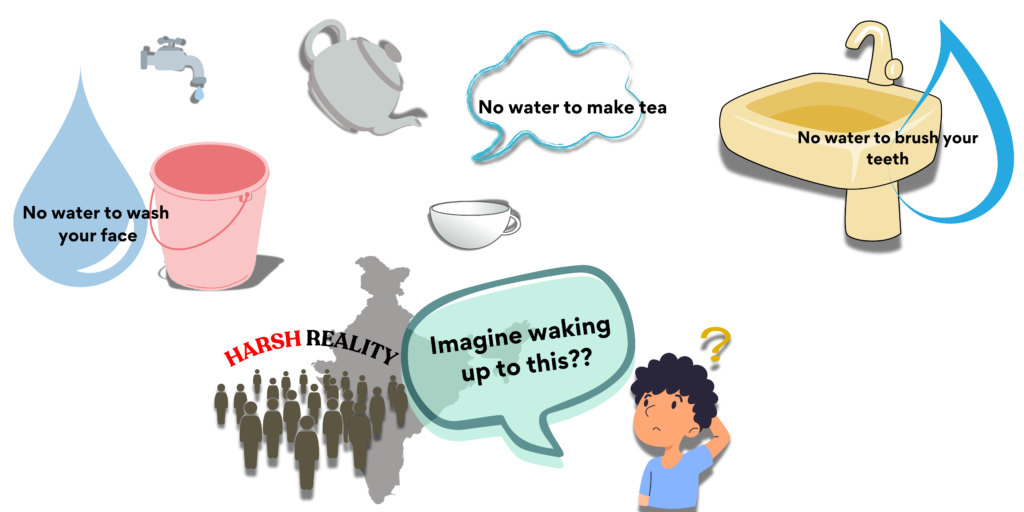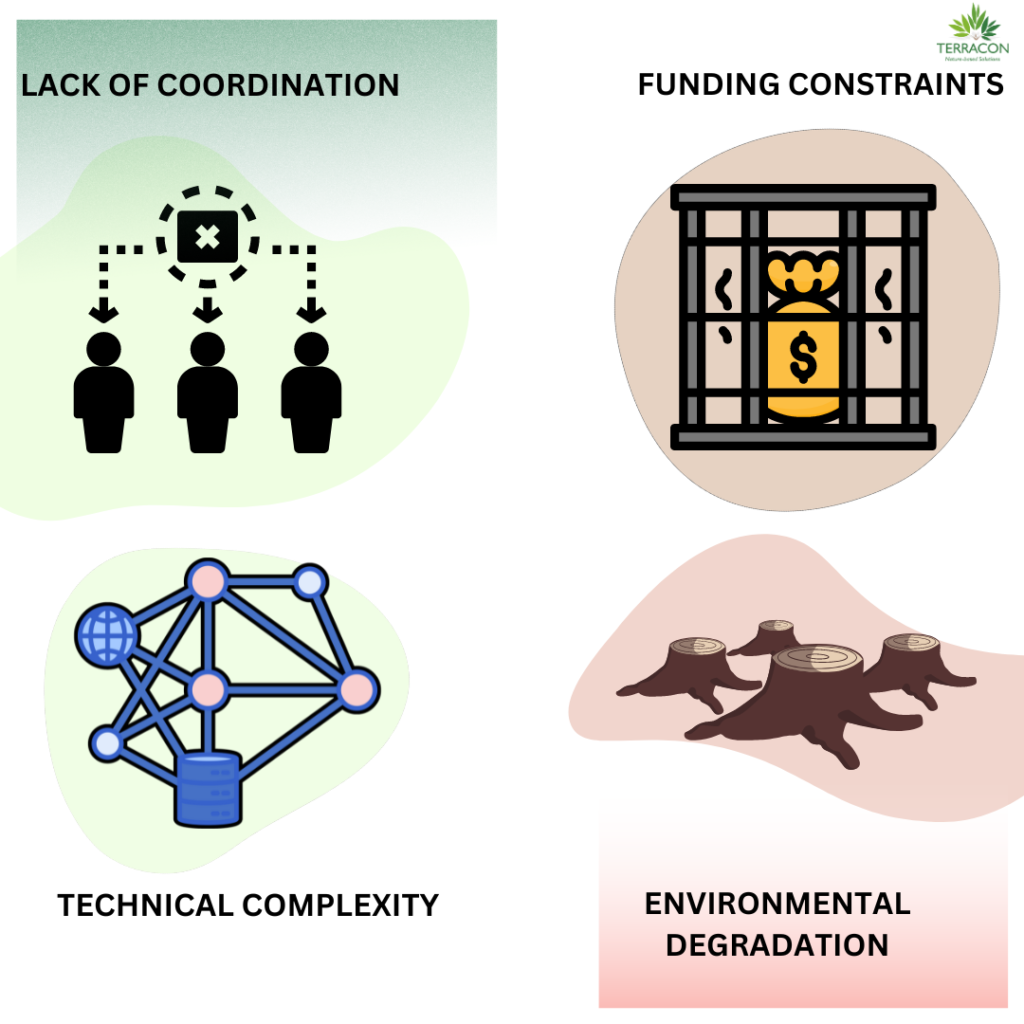
Imagine waking up one morning to find that the tap in your kitchen has run dry. No water to brush your teeth, no water to wash your face, no water to make a cup of tea. For millions of Indians, this is a harsh reality that they face every day. The country is staring at a severe water crisis, with many of its rivers, lakes, and aquifers drying up at an alarming rate.
The statistics are staggering. India is home to just 4% of the world’s freshwater resources, but supports over 18% of the global population. The per capita availability of water in India has declined by 70% over the past 60 years, and is expected to drop even further in the coming decades. The situation is so dire that the National Institution for Transforming India (NITI Aayog) has warned 21 major cities in India including Delhi, Bengaluru, and Hyderabad, will run out of groundwater, Furthermore, the report states that 40% of India’s population will have no access to drinking water by 2030, and 60% of the country’s aquifers will be in a critical condition by 2025
The CWMI report also highlights the economic implications of the water crisis, estimating that India’s GDP will decline by 6% by 2050 if the crisis is not addressed. The report emphasizes the need for urgent action to address the crisis, including improving water conservation, increasing water efficiency, and promoting sustainable water management practices.
But the water crisis in India is not just a matter of scarcity; it’s also a matter of quality. Many of India’s rivers, lakes, and wetlands are severely polluted, posing a significant threat to human health and the environment. The Ganga River, considered sacred by millions of Indians, is a prime example of this pollution. Despite being a lifeline for millions of people, the river is choked with industrial waste, sewage, and agricultural runoff, making it one of the most polluted rivers in the world.
So, what’s the solution to this crisis? The answer lies in adopting a holistic approach to managing India’s water resources, one that involves the conservation, regeneration, and judicious use of all natural resources within a watershed.
The term “watershed” is often used interchangeably with “drainage basin,” which may make the concept easier to visualize… The easiest way to envision a watershed is to think of a bowl. Any water at the high points of the bowl will flow to the lowest point, no matter how big the bowl is.

To effectively tackle the water crisis, it is essential to understand the concept of a watershed. A watershed is a geo-hydrological unit that drains to a common point by a system of drains. It’s an area of land that collects and drains rainwater and snowmelt into a common waterbody, such as a river, lake, or ocean. Watersheds can vary in size, from small, local watersheds to large, regional ones that span across multiple states or countries.
Understanding the concept of a watershed is essential to managing our natural resources effectively, as it allows us to identify the interconnectedness of our water systems and the impact of human activities on the environment.
Why is Watershed Development Important in India?
Watershed development is crucial in India because it helps to protect water quality. Watersheds are networks of rivers, lakes, and streams that can carry pollutants like chemicals, waste, and dirt into our water bodies, making them unsafe for drinking, irrigation, industry, and recreation. Watershed development reduces these pollutants by implementing sustainable practices, improving waste management, restoring natural habitats, and educating communities.
Watersheds also support industries like fishing, tourism, and agriculture, and are home to diverse plants and animals. The Ganga River watershed, for example, supports over 400 million people and is considered sacred in Hinduism. However, it faces challenges like pollution, deforestation, and climate change. Watershed development in the Ganga River basin aims to address these challenges by implementing pollution control measures, restoring natural habitats, promoting sustainable agriculture, and educating communities. By protecting the Ganga River watershed, we can preserve the environment, support industries, and ensure a healthy and sustainable future for millions of people.

The Challenges of Watershed Management
- However, watershed management in India faces several challenges ,One of the major hurdles is the lack of coordination among various stakeholders, This includes government agencies, local communities, and private landowners, often leading to conflicting interests and priorities that undermine unified management effort.
- Funding constraints present another significant barrier. Effective watershed management requires substantial financial resources for infrastructure development, monitoring, and educational initiatives. Many regions experience limited budgets that restrict investments necessary for achieving management goals.
- The technical complexity of watersheds is also a daunting challenge. These systems encompass various ecological and hydrological factors, making it difficult to assess and monitor management interventions. The interactions between upstream and downstream effects complicate the understanding of how various activities impact the overall health of the watershed.
- Environmental degradation, often caused by unsustainable exploitation of resources, significantly impacts watershed health. Issues such as deforestation and excessive agricultural practices lead to pollution and habitat loss, jeopardizing water quality and biodiversity
Solutions for Effective Watershed Management

- To enhance stakeholder coordination, building local partnerships is critical. Involving stakeholders in planning processes fosters collaboration and helps bridge gaps between conflicting interests. Creating platforms for dialogue among various stakeholders promotes shared decision-making, leading to a more cohesive strategy for watershed management
- Securing adequate funding is essential for successful watershed management. This requires identifying a range of funding sources, such as government grants and public-private partnerships. Advocating for increased budget allocations for environmental initiatives can also support the implementation of comprehensive management plans
- Utilizing advanced technologies can significantly improve the effectiveness of watershed management. Tools such as Geographic Information Systems (GIS) and remote sensing facilitate better data collection and analysis regarding watershed conditions. Adopting research-based best management practices tailored to local contexts can enhance decision-making processes
By recognizing the key challenges and implementing targeted solutions, effective watershed management can be achieved. Through collaboration, secured funding, technology adoption, and sustainable practices, watersheds can be preserved and improved for both current and future generations. Addressing the complex issues surrounding watershed management is imperative not only for ensuring access to clean water but also for safeguarding India’s economic future and environmental health.

Written by
Anjeeta Goud
Team- Business development and Strategy
Terracon Ecotech
Reference:
National Institution for Transforming India.
Economic Implications of Water Crisis





